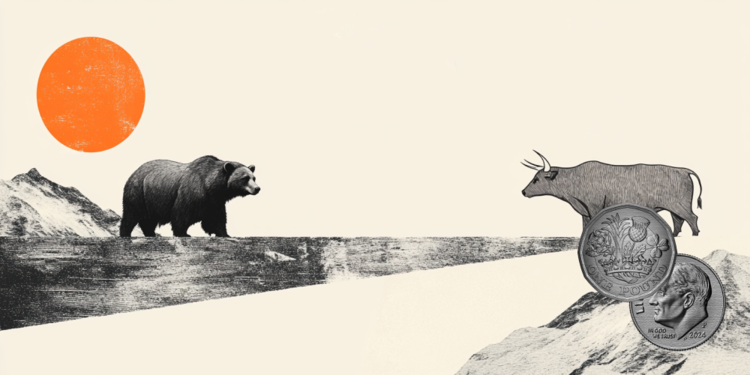The water levels in the Lake Titicaca – the highest navigable lake in the world and the largest in South America – are rapidly shrinking after an unprecedented winter heat wave. The shocking reduction affects tourism, fishing and agriculture, which locals depend on for a living.
“We don’t know what we’re going to do until December because the water will keep going down,” he said. Nazario Charca, 63 years old, who lives on the lake and works transporting tourists across its waters.
Visitors have long been drawn to the blue waters and open skies of South America’s largest lake, which stretches over 8,200 square kilometers along the border of Peru and Bolivia.
Sometimes described as an “inland sea”, it is home to Aymara, Quechua and Uro indigenous communities and sits at an altitude of around 3,800 meters in the central Andes mountain range, making it the highest navigable lake in the world. The extreme altitude also exposes the lake to high levels of solar radiation, which increases evaporation, which makes up most of the water loss.
More than three million people live around the lake and depend on its waters for fishing, farming and attracting tourists who drive the economy of an otherwise marginalized region. Now the lake is in danger of losing some of that magic.
Although water levels are known to fluctuate every year, these changes have become more extreme due to the climate crisis. An unprecedented winter heat wave is causing increased evaporation and lower lake levels, according to CNN, Taylor Ward, aggravating the water deficits caused by the drought.
Sixto Flores, director in Puno of the National Service of Meteorology and Hydrology of Peru (Senamhi), told CNN that rainfall was 49% less than the average from August 2022 to March 2023, a period that includes the rainy season, during which water levels tend to recover.

Flores explained that by December water levels will be heading towards the lowest levels recorded since 1996 if the lake evaporates at the same rate as it normally does in the coming months, which he described as “very serious”.
This is part of a “gradual decline” in the lake’s water levels in recent years, according to Flores, and a recent study examining satellite images from 1992 to 2020 showed that Lake Titicaca is losing about 120 million metric tons of water. water per year which, according to the authors, is mainly due to changes in precipitation and runoff.
Communities that rely on fishing face difficulties as low water levels compound growing problems: declining fish populations due to pollution and overfishing.
Agriculture has also been affected by the drought and regional authorities have reported that crops suffered severely last season. The vast majority of quinoa and potato crops, both local staple foods, were affected, as was the oats used to feed livestock.
The tourism economy also suffered after boats used to transport visitors around the lake were stranded when the waters receded.

“We are very concerned, especially as the water level is dropping a lot right now,” said Jullian Huattamarca, 36, who sells locally produced textiles to visitors to the island of Taquile. “We want tourists to come back, especially foreigners,” he said.
The Puno region, which encompasses the entire Peruvian side of Lake Titicaca, has long been known as an underdeveloped and marginalized region of the country. More recently, the economy has been hit by the effects of the Covid-19 pandemic and a wave of social unrest.
Puno has become the epicenter of demonstrations calling for the resignation of President Dina Boluarte, adding to the outrage generated by decades of inequality, accusations of corruption and stagnant living standards.
Huattamarca said visitors did not travel to the region during the protests. “They were a little scared to come,” he said. In addition, according to Huattamarca, many people have left the area in recent years, especially during the pandemic. “They had to do this, they didn’t have enough money to cover basic needs like food,” he said.

And recent history suggests that the current drought could drive more people from their homes, as an earlier drought in 1991 triggered waves of migration as the subsistence economy collapsed due to food shortages.
For others, like Charca, the drought changes their way of life. Charca is part of the Uros indigenous group, who live on islands made of dried reeds that float in the lake. For centuries, Uros have woven reeds onto islands, as well as using them to build homes and boats, but Charca is concerned that lower water levels mean less reeds are available.
“It will continue to affect us, there will be no more reeds, the islands are deteriorating, that’s what worries us,” he said.

Looking ahead, it’s hard to see any respite. El Niño is currently underway, a natural phenomenon characterized by higher than normal temperatures in the tropical Pacific Ocean that can significantly alter the climate on the continent.
Grinia Ávalos deputy director of climatology at Senamhi, told CNN that these higher temperatures should continue at least until February 2024. “These conditions will contribute to the reduction of rainfall in the Andean region,” he said.
For Connor Baker , an analyst at the International Crisis Group, the situation calls for long-term action to protect those who depend on the lake. “While lake fluctuations have been linked to climate variability and natural oscillations, the exacerbated influence of climate change increases the need for sustained management strategies,” he said.
“Local communities that depend on the lake for their livelihoods are particularly vulnerable, underlining the urgency of addressing the challenges posed by the most intense fluctuations in water levels.”
Source: CNN Brasil
Bruce Belcher is a seasoned author with over 5 years of experience in world news. He writes for online news websites and provides in-depth analysis on the world stock market. Bruce is known for his insightful perspectives and commitment to keeping the public informed.







